Itinerary-wise, we drew several lessons from our 2019 trip to Tokyo and Hokkaido. For example, we made sure that our places of stay, as far as possible, would be close to the train stations. We gave ourselves buffer time to get orientated to the train stations in the large cities that we would be traveling to – e.g. Kyoto, Osaka and Nagoya – and also checked carefully what train lines would be supported by the JR passes we planned to acquire. What we generally didn’t anticipate enough though was how bad weather would derail some of our planned itinerary activities: specifically that Oshima Island and Shinhotaka Ropeway Station 2 (Days 9 and 12 respectively) would be closed because of weather, and that we gave up Gujo Hachiman (Day 14) similarly because we were worried also about snow conditions that day.
Still, we were able to stick to most of the planned itinerary, and – for the most part – the places we visited generally didn’t disappoint. Unlike the 2019 trip, we traveled far more extensively to different cities this trip and also did not rely on day tours. We’ll split this long itinerary discussion into two parts: this first post covers Days 01 to 07 of our itinerary, and the next will cover the rest.
We bought two JR passes: 4 Day JR Kansai Area Pass, and the 5 Day Takayama-Hokuriku Tourist Pass to cover the different regions we were traveling.
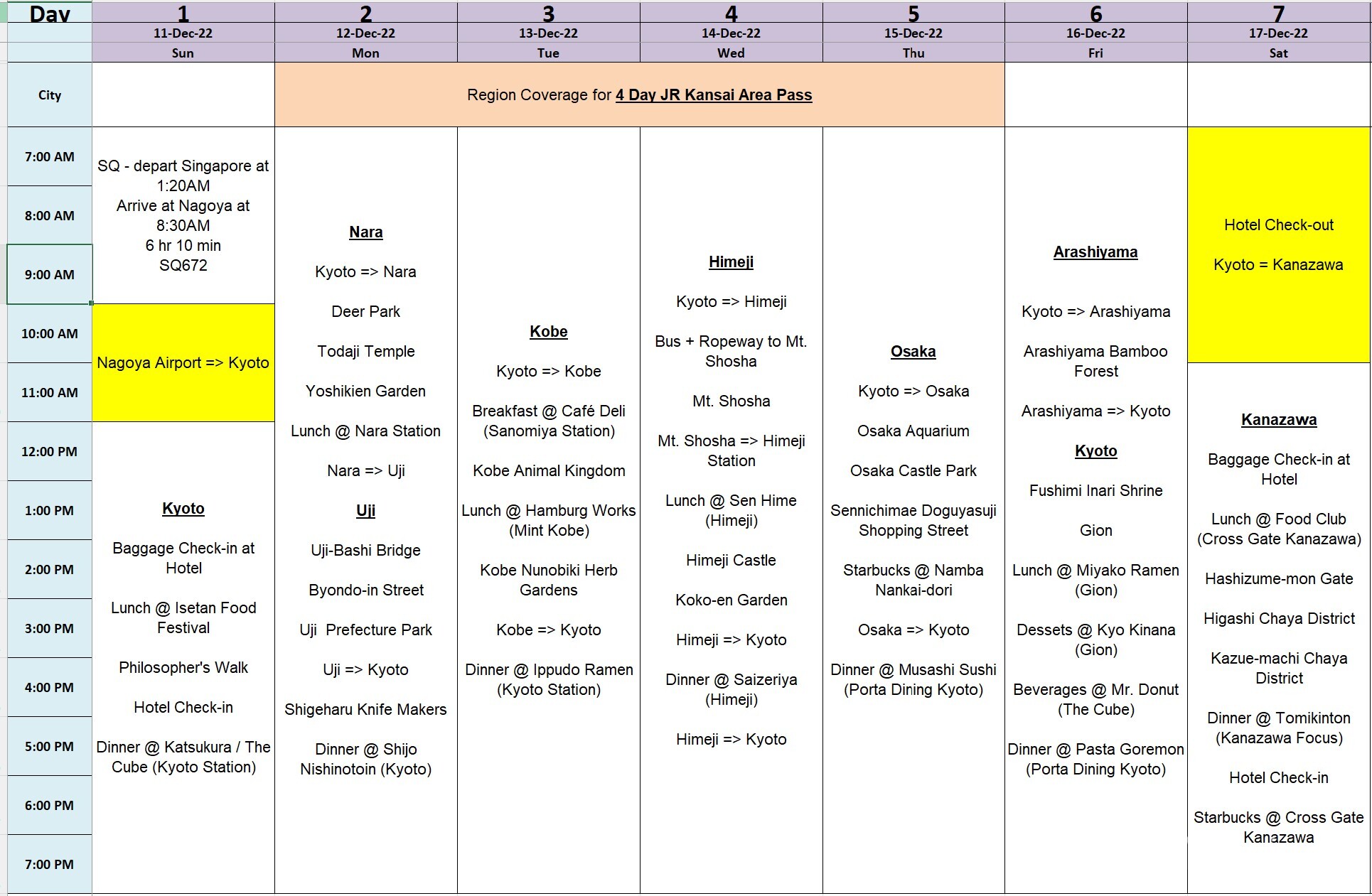
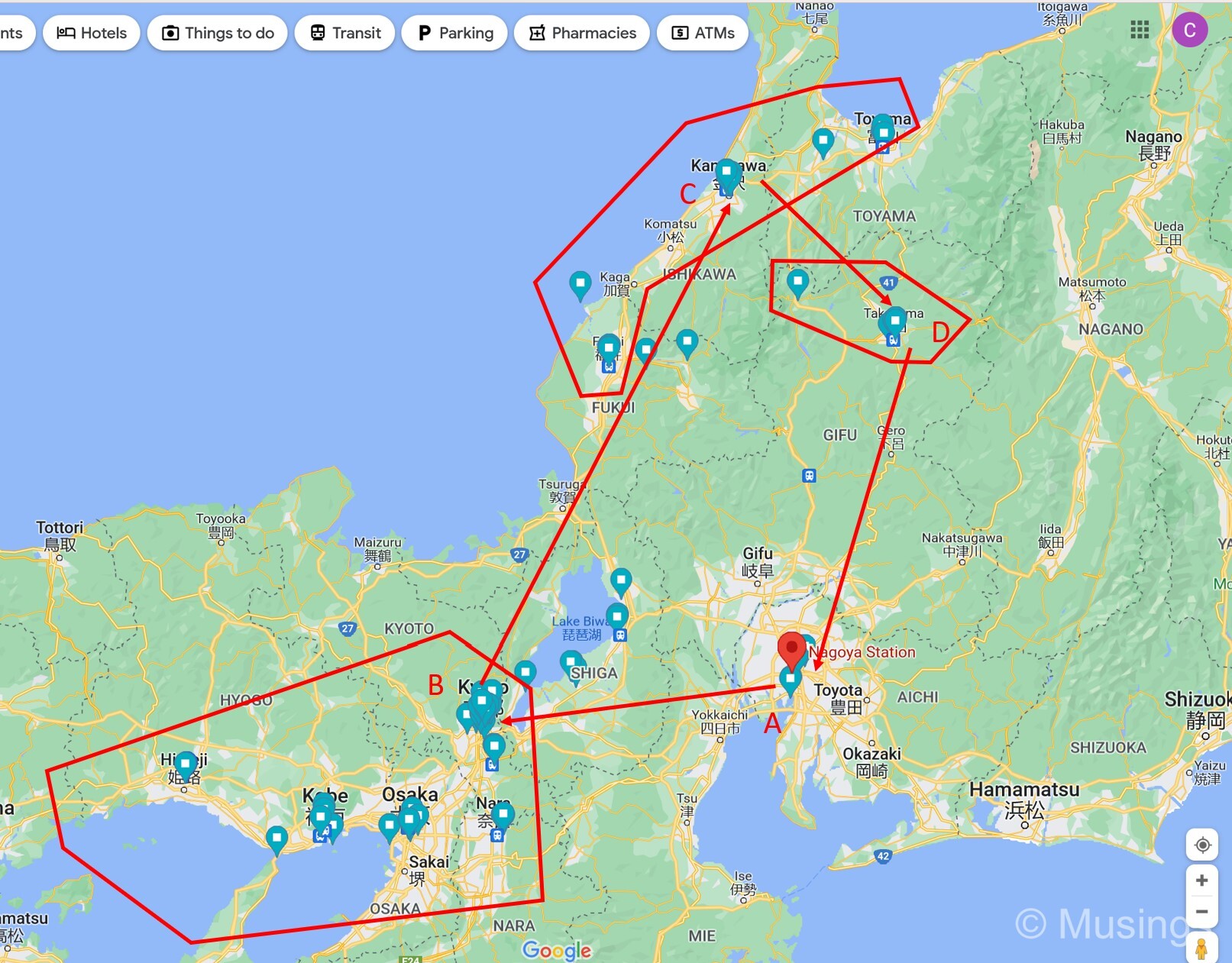
Day 1 (Nagoya – Kyoto)
Travel from Chubu Centrair International Airport (Nagoya) to Kyoto (1.5 hrs): this is a reasonably easy journey to make after we decided to fly to Japan via Nagoya airport. Basically, from the airport, we took the Meitetsu-Limited Express train from the airport to Nagoya, then from Nagoya it’s easy to get to Kyoto itself. Our 4 Day Kansai Wide Pass was starting only on Day 02, so we had to pay for the Nagoya to Kyoto ride separately. There is also the Shinkansen option between both cities, so go for it if you’d like to shave some time off the movement here. The tickets for Meitetsu-Limited Express airport to station transfer can be purchased from Klook.
Kyoto: Philosopher’s Walk (2 hrs) [blog post here]: this was a lovely way to get started on our first day in Japan – but I suspect due in large part also to that we started the walk past mid-afternoon where there really weren’t much visitors still wandering the area. It’s also because unlike the 2010 trip, we didn’t begin the walk from Jodoji Nishidacho – which might be a bit congested as many visitors would start from there because of ease of transportation options. Rather, we got in from around the mid-point of the walk – Shishigatani Honenin Nishimachi – then followed the path northwards. You could just as well walk southwards too, and I suspect any crowds would be even less dense there.
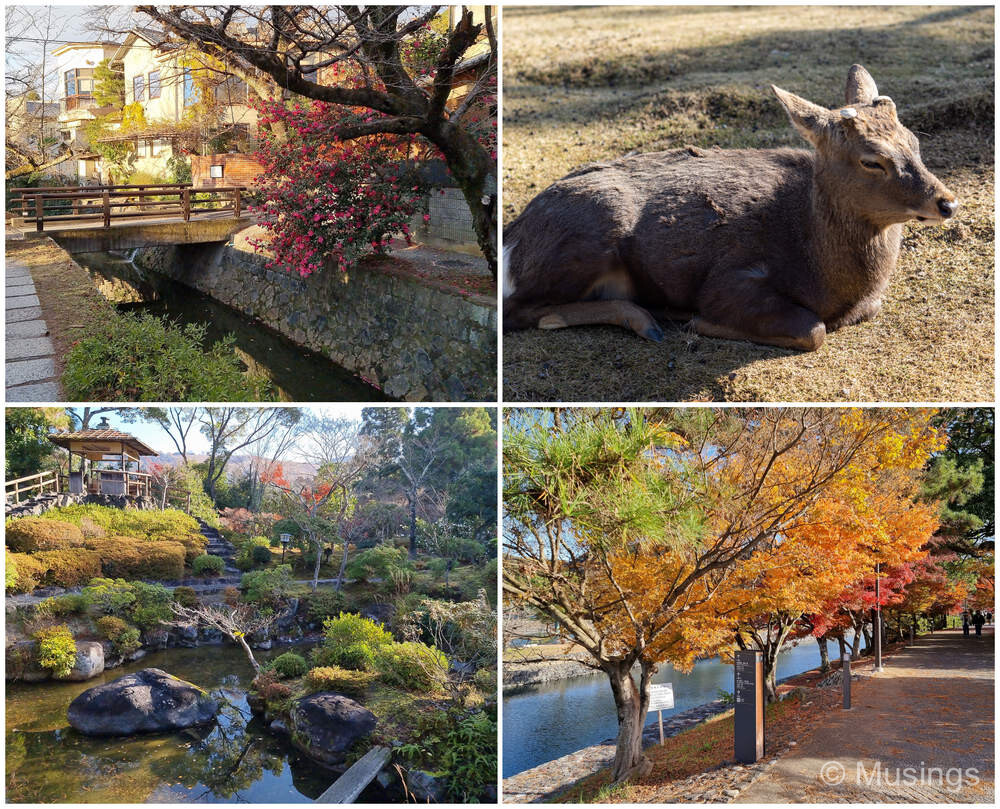
Day 2 (Nara – Uji)
Nara Deer Park (0.5 hrs) [blog post here]: An unmissable experience for any visitor to Nara. A couple of things to keep in mind though: firstly, the park is fairly large + the deer will congest around the stalls that sell biscuits as they know that would be where they get fed. I’ve put only 0.5 hrs as a visitation time here within the park itself as the deer’s interest in you is largely dependent on whether they sense you have food on you! If you have the monies to spend, then by all means: buy as many stacks of the biscuits and have the very tame deer follow you around the city haha. If the spot you’re checking out in the park is congested with visitors, feel free to move on and find another spot.
Yoshikien Garden and Todaji (2 hr+) [blog post here]: Yoshikien Garden is a small landscaped garden you can check out when in Nara. Keep in mind though that there are larger and – arguably – far better known and nicer gardens in Japan, so if you’re already visiting those, then might not be much in Yoshikien that you won’t see elsewhere. Still, this garden sees few visitors, so if you’d like a peaceful and serene stroll through a landscaped garden, Yoshikien remains worth checking out.
Todaji is a different matter: the temple grounds is large, and if you haven’t already gotten your fix of having deer harass you for food, there is plenty of deer roaming the temple grounds here too. How much time you spend here will depend too on whether you want to enter the main temple itself. There is an admission charge, and there were plenty of large tour groups entering the temple on the day we visited.
Uji-Bashi Bridge and Byondo-in Street (1 hr) [blog post here]: Uji as a city was sort of “on the way” as we returned from Nara to Kyoto, so we opted to spend the second half of Day 02 in this small city. Uji is particularly famous for its Matcha products, so you’d want to spend some time at Byondo-in Street sampling those products. Uji-Bashi Bridge is worth spending a few minutes getting your photos to post on social media, but there isn’t much else, and there are prettier bridges around the Uji Prefecture Park area just further-on.
Uji Prefecture Park (2 hrs+) [blog post here]: We loved this park! No, there’s nothing particularly unique about it, but it’s a spot that’s largely frequented only by locals and not tourists, and the trees and flora were showing their best late autumn colors the afternoon we visited. The park is quiet, has many river-facing benches for you to sit down and contemplate life.
Day 3 (Kobe)
Kobe Animal Kingdom (2 hrs+) [blog post here]: We listed three cities outside Kyoto this 2022 trip in order to make good use of the 4 Day Kansai Wide JR Pass: Kobe, Himeji and Osaka. Kobe is a pretty well-developed port city, and did a 3D2N in this city our 2010 trip. This year round, we opted for different places to check-out: starting with a visit to the Kobe Animal Kingdom in the morning. Think of this place as a children’s zoo, with a super cute cast of animals that you can pet and take pictures. The enclosure with felines and canines need time slot reservations, so make sure you queue up for it as soon as you’re in the park. The Fish Spa is a novel experience too, so go for it if you haven’t done one before. There is also a Red Panda show that’s quite fun to watch, albeit it being in Japanese. But you get really up close with these lovely animals (no touching them though!). The other enclosures – including farm animals, one with a bear and another with a Sumatran Tiger – are alright but won’t be anything you might have already seen elsewhere in other zoos.
Kobe Herb Garden (3 hrs+) [blog post here]: If you’re a horticulturist or just someone who loves plants and flora, then this a must visit! The visit starts with a scenic up the mountain via ropeway, and you basically make your way down in a descent that will take you through themed garden after garden. There are plenty of areas for you to stop and take a break too, including a herbal foot bath where the glasshouse is.
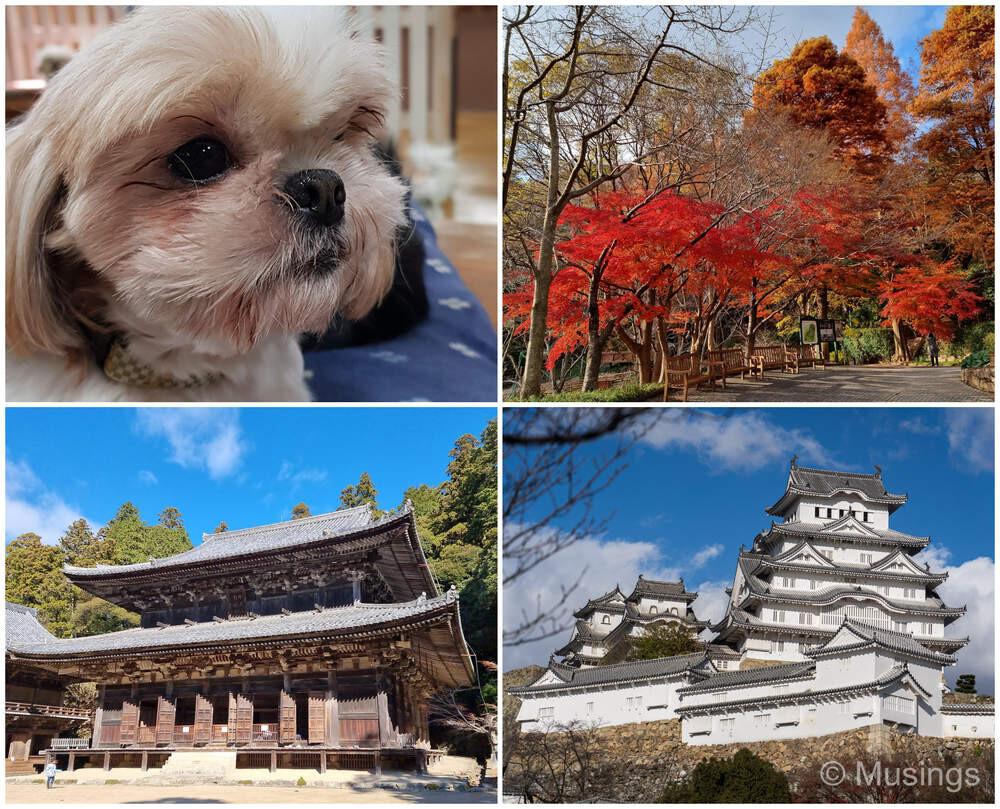
Day 4 (Himeji)
Mt. Shosha and Engyoji Temple (3 hrs+) [blog post here]: The 1000 year old temple that sits on a mountain and also the site which you saw Tom Cruise learning the ways of the Samurai. If you’re in a hurry, pay the necessary fee to take the bus up to the main temple, take your pictures, then take the same bus ride back. But the visit was made the more memorable because of the human suffering involved in it for us – i.e. the climb up to the temple haha! Some parts of it is steep, and there will be places where you’d be starring very hard at the supplied map from the entrance and wondering do you take a left or a right. There are several buildings in the very large temple compound that you can visit, but keep in mind too that this is a working temple and not a museum: so you’ll want to be alert to devotees and not be an intrusion.
Himeji Castle (2 hrs+) [blog post here]: Arguably the most visually stunning and majestic castle in Japan, though – and at the risk of getting hate comments – I found the place more interesting from the outside than from the inside. The castle compound is really big, and you can easily spend an hour just walking along its walls and exploring the turrets and smaller keeps alone, let alone the main keep. The place is a major tourist attraction, so be prepared for crowds, and visitors walking right into your lovingly framed vanity selfie. Make sure you get the combination ticket with Koko-en too (see below).
Koko-en (1.5 hr+) [blog post here]: This garden is adjacent to Himeji Castle, and isn’t regarded among Japan’s top three landscaped gardens – but the Lord’s Residence garden with the pond in its center is stunningly beautiful, even more so if you get to enjoy its autumn colors. The garden is of midsize, and I reckon many visitors to Himeji Castle will also jolly onto Koko-en. So, if you’re looking for a stress and traffic-free stroll through this garden, you’d need to time it for a off-peak visit.
Day 5 (Osaka)
Osaka Aquarium Kaiyukan (2 hrs+) [blog post here]: This was our second visit to the aquarium in Osaka, and oddly, I at least didn’t get wowed as much as I did – in that there are better aquariums around the world. The school of dolphins though were terrifically friendly, and the wife got a really fun shot of a smiling ring seal. No kidding LOL. Still, aquariums by and large are sure hits with the kids, so go for it if you’re in the vicinity. Just manage your expectations, especially if you’re thinking the Osaka Aquarium is at the level of where the S.E.A. Aquarium is!
Osaka Castle Park (2 hrs+ [blog post here]: The park is where another massively popular castle that tourists zero in on sits at. On our day of visit, we saw the large tour groups all making their way to see the castle interior, and we all voted ‘no’ – we won’t go in and will just gawk from the outside. From what I hear, the interior has far more to see and experience than Himeji Castle, and I guess my party – the wife, Matt, and the two kids – might have been able to see and learn much if we’d joined in the crowds.
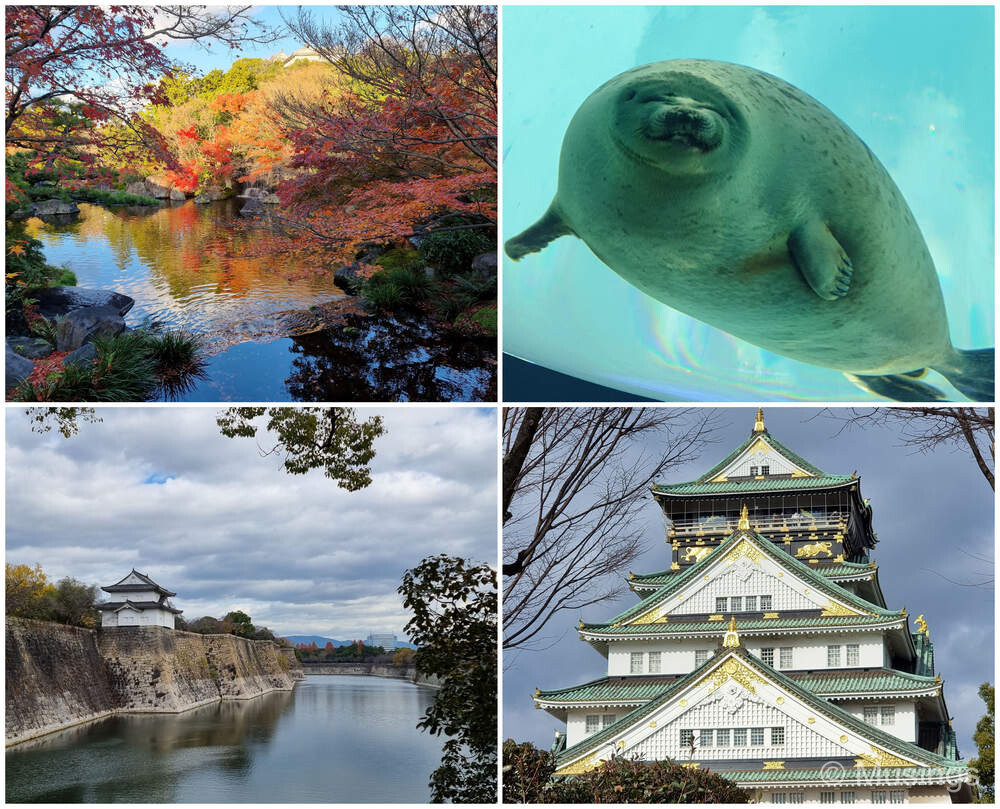
Day 6 (Kyoto – Arashiyama)
Arashiyama Bamboo Forest (1 hrs) [blog post here]: Japan has a number of bamboo groves, but the one in Arashiyama easily takes the crown for being the most beautiful. The web is filled with scary pictures of crowds walking the path and leading others to conclude that it’s literally impossible to get those instagrammable pictures of the forest: but it’s doable. You just have to visit the forest when no one else is there: either very early, or very late! We went with the former option and we saw perhaps half a dozen other visitors that morning scattered along different sections of the walking path that cuts through the grove.
Fushimi Inari Shrine (1 hr+) [blot post here]: Another very iconic picture that comes to mind where travelers think of Kyoto is that of the thousands of torii gates at Fushimi Inari Shrine. We got to the shrine mid-morning, and joined in the probably several hundred of visitors already there – including a large number of high school students. Fortunately, the crowds will thin out from about ten minutes into the path, so if you need your pictures sans humans, keep walking until you get to a section with fewer people, and snap away. Unfortunately, the density of gates also get lower the further in you are. I reckon you will want to try as much as possible to take your pictures upon opportunity as soon as you start on the path, as there are frequently momentary dead spots without human traffic.
Gion (2 hrs+) [blog post here]: The famed Geisha district. We did debate whether the lady we saw during our visit was a Maiko or a Geisha, and concluded that we were lucky enough to see a Geisha. Beyond that, the district is pretty touristy and gets quite congested sometimes. Still, make the trip just to soak in the atmosphere, and be alert and observe where the local photographers are congregating – you can tell from their pro-gear and that many are middle-aged male Japanese haha – they might just be waiting for a Geisha to make her appearance!
Day 7 (Kyoto – Kanazawa)
Higashi Chaya District (1 hr+) [blog post here]: There are actually two historical districts separated by a river in Kanazawa. The Higashi Chaya District is the most famous one and also correspondingly more congested with visitors with its shops for dining and craft products. Both feature the signature wooden houses of old, and this district is arguably the more atmospheric of the two. You’ll want to visit both just to see the difference in vibes.
Kazue-machi Chaya District (1 hr+) [blog post here]: The more sedate of the two historical districts: there were few other visitors besides us the afternoon we visited. You’ll want to stroll along Asano River for certain and marvel at the old shop houses.
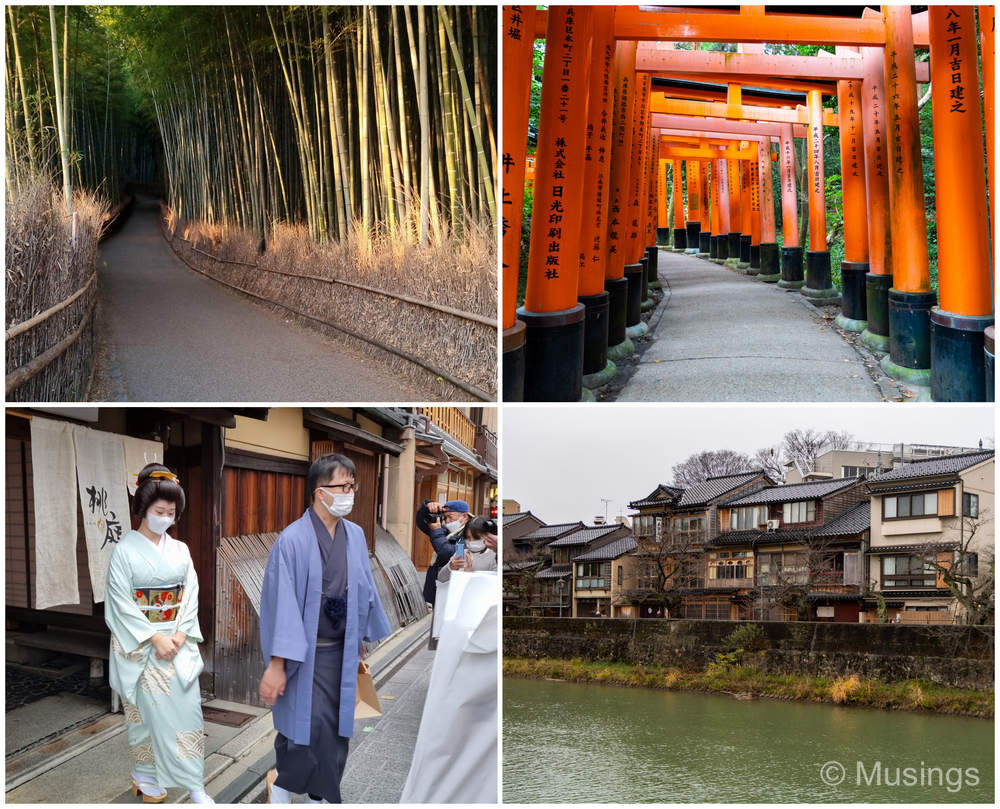
Continued in the next post which will cover Days 08 to 15!